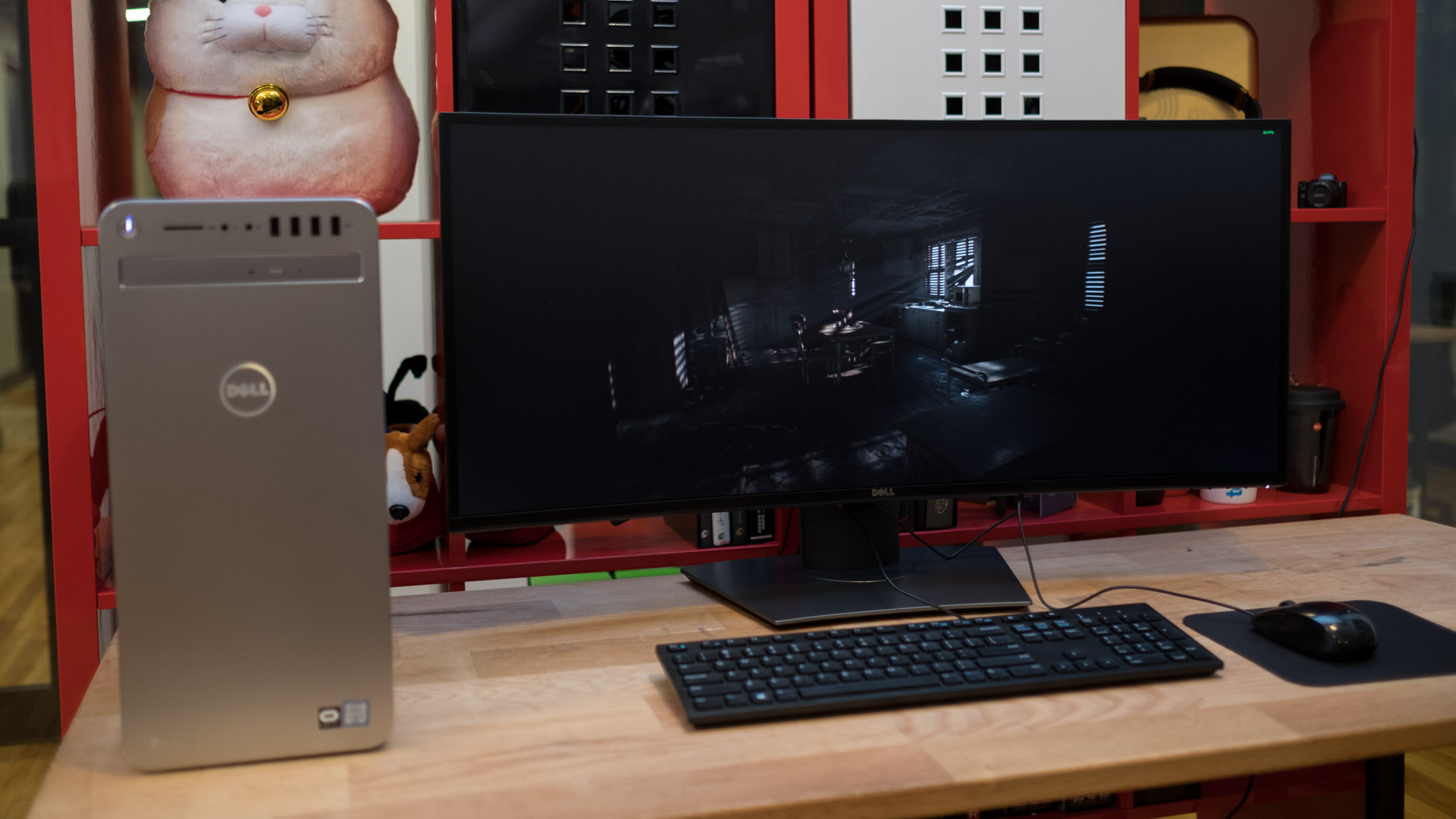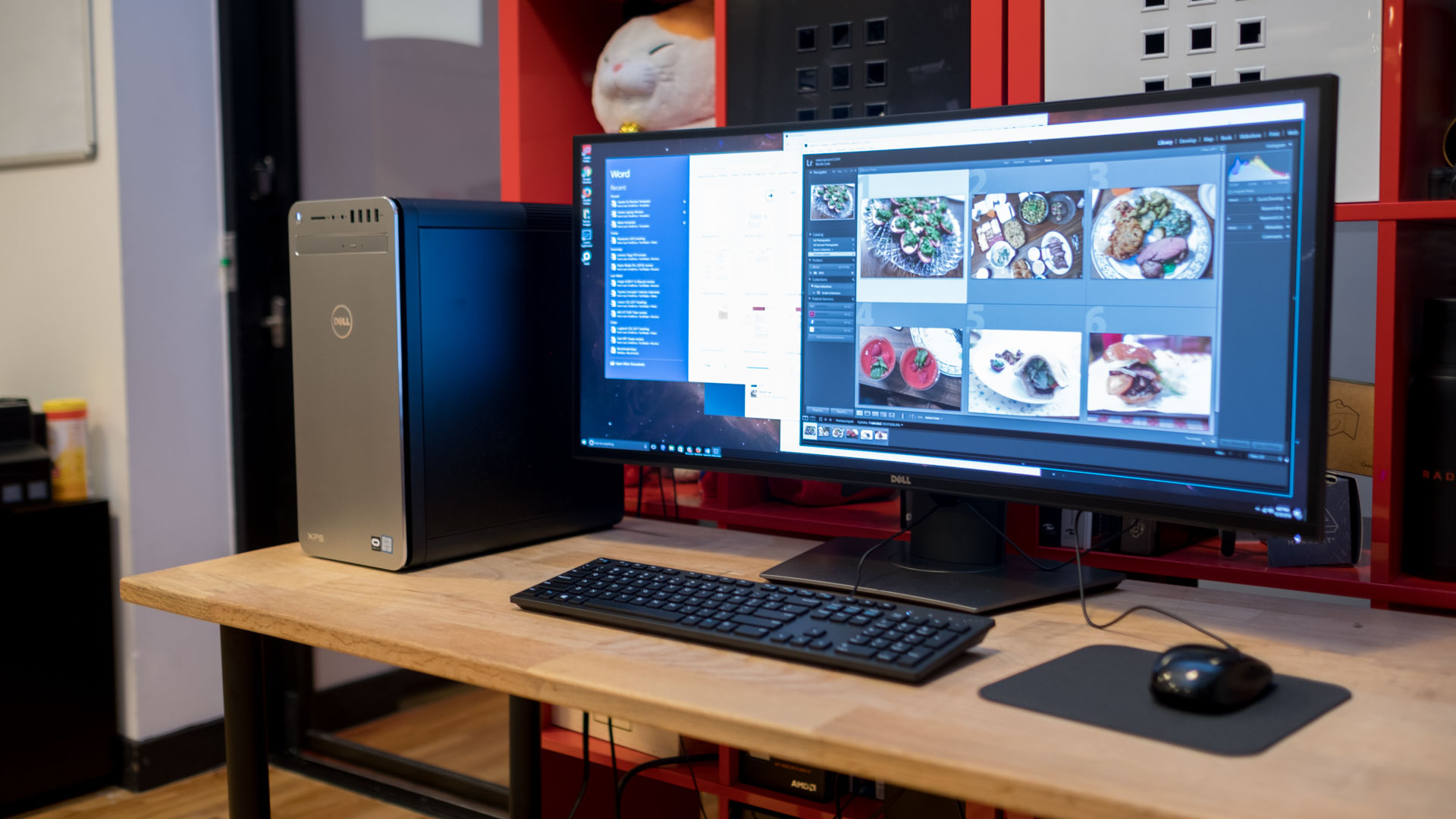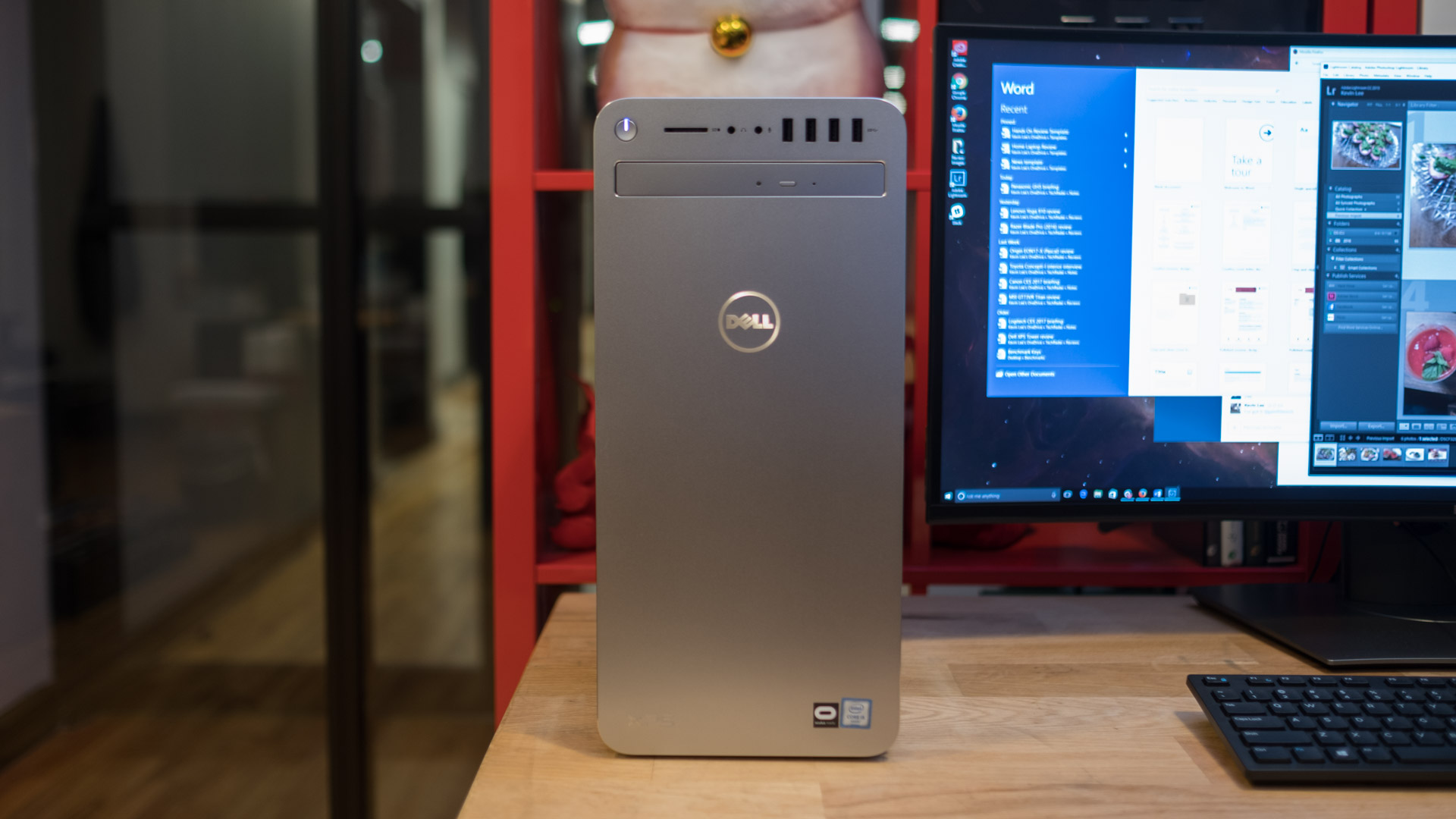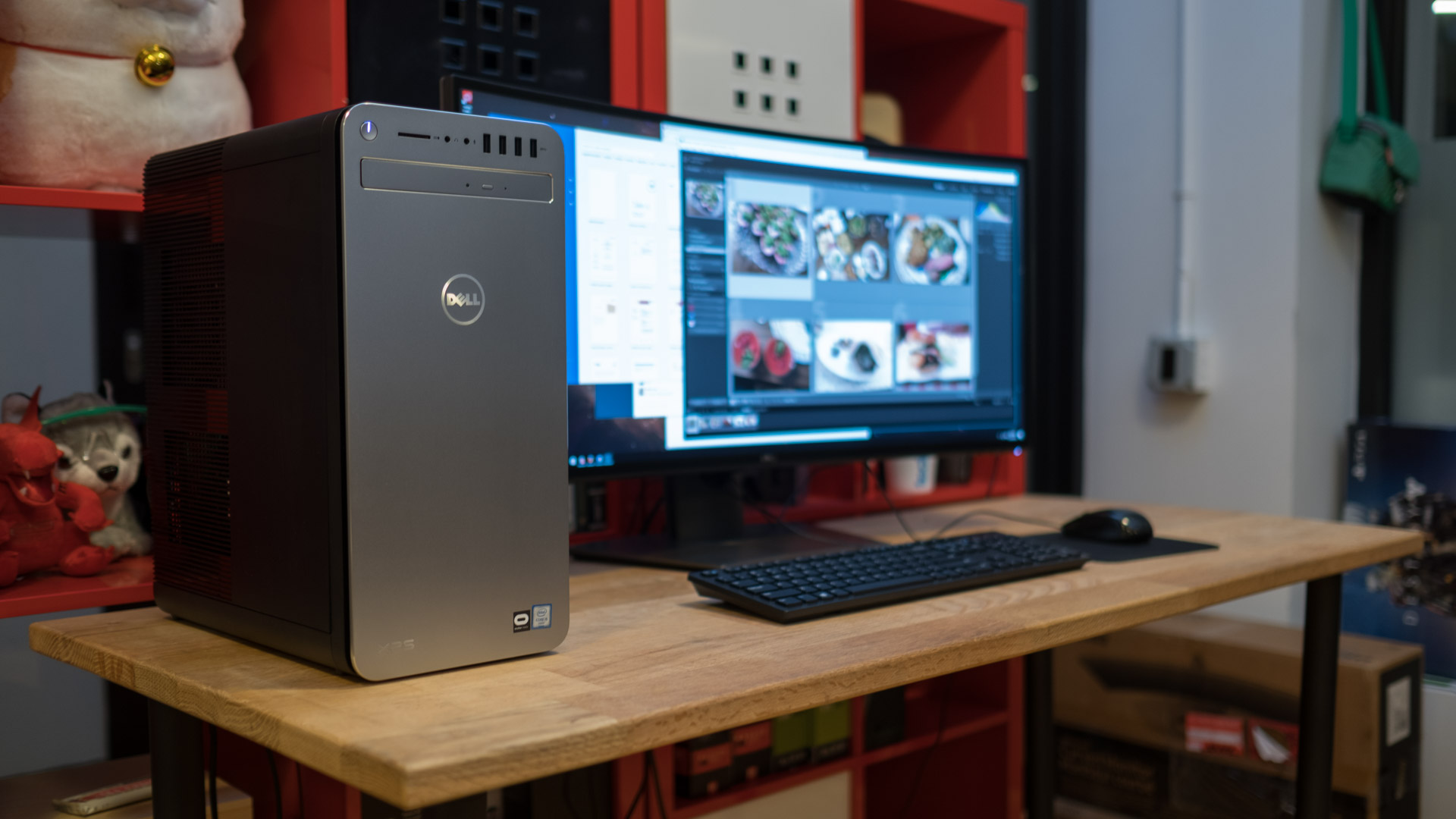TechRadar Verdict
Underneath the Dell XPS Tower’s a sleek, unassuming exterior lies a gaming PC with enough power for virtual reality experiences and high-performance gaming – and at a great price.
Pros
- +
Compact, minimalistic design
- +
Affordably priced
- +
Full online customer support
Cons
- -
Non-K, locked processor
Why you can trust TechRadar
If you had a desktop computer growing up, it probably was a Dell. The company’s towers have always been attractive, reliable and, above all, value-packed.
The latest XPS Tower Special Edition ecially interesting in that it’s more compact than ever. What’s more, Dell has packed in both Intel’s Coffee Lake processors and Nvidia’s 10-series graphics cards, making it virtual reality-ready and powerful enough to game even when hooked up to a ridiculously sharp monitor.
Updated: We've updated our Dell XPS Tower Special Edition review with impressions and benchmarks from the latest 2018 model featuring Intel Coffee Lake processors.

CPU: 3.2GHz Intel Core i7-8700 (hexa-core, 6M Cache, up to 4.6GHz)
Graphics: Nvidia GeForce GTX 1070 (8GB GDDR5 VRAM); Intel UHD Graphics 630
RAM: 16GB DDR4 (2,666MHz)
Power Supply: 460W
Storage: 256GB PCIe NVMe SSD, 1TB HDD (7,200 rpm)
Optical drive: 8x DVD-RW drive
Ports: 7 x USB 3.0, 1 x USB 3.1 Type-A, 1 x USB 3.1 Type-C, 2 x USB 2.0, SD card slot, HDMI, Display Port, Gigabit Ethernet, mic-in, headphone-out, 5.1 channel audio jacks
Connectivity: Killer 1535 802.11ac (2x2), Bluetooth 4.1
Operating system: Windows 10 Home 64-bit
Weight: 22 pounds (10kg)
Size: 7.09 x 14.02 x 15.22 inches (18 x 35.6 x 38.7cm; W x D x H)
Pricing and value
The Dell XPS Tower Special Edition now starts at $999 (about £700, AU$1,300), and for that price you’re getting a fully capable gaming PC. Equipped with a hexa-core CPU and an Nvidia GTX 1050 Ti to start, this rig is fully ready for all types of eSports games and most modern titles.
On top of the addition of 8th-generation Intel Core processors, every XPS Tower Special Edition now comes with 2,666MHz memory that’s a major step up from the previous 2,133MHz RAM onboard previous iterations.
Our review configuration, meanwhile, is a mid-range model that comes with the (currently) highest-end, 8th-gen Intel Core i7 CPU, Nvidia GTX 1070, 16GB of memory and a 256GB SSD, for $1,724 (about £1,230, AU$2,230). Regardless of whether you go for the same exact upgrade, you’re looking at a throughly VR-capable rig for less than two grand.
The Special Edition version of the XPS Tower isn’t available in the UK and Australia, but users in those territories will be able to configure a regular XPS Tower with roughly the same parts. Spending £1,399 in the UK nets you the same configuration as our review unit plus a larger 4TB hard drive. Meanwhile, a similarly specced machine with a still-larger 2TB HDD goes for AU$2,499 in Australia. The only thing you’ll miss out on with the regular models is the metal front panel.
Sign up for breaking news, reviews, opinion, top tech deals, and more.
Comparatively, the Lenovo Legion Y920 Tower comes in at a very similar $1,799 price featuring all the same specs except for a last-gen Intel Core i7-7700K CPU, half-sized SSD and slower frequency RAM. In the UK and Australia, the gaming PC comes with a beefier 256GB SSD, 2TB HDD and Nvidia GTX 1080 for £1,899 or AU$4,599.
Alternatively, you could pick up the HP Omen Desktop PC for $1,604 (about £1,145, AU$2,090). At this price point, this desktop features a nearly identical spec sheet to that of the Dell XPS Tower, but is far smaller than it and the Lenovo Legion Y920.
There’s clearly a lot of competition in this mid-tower gaming space. Ultimately, these systems are going to differentiate themselves through performance and whichever is easiest to upgrade.

Design
Outwardly, the XPS Tower looks so formal, you might think Dell accidentally shipped one of its Precision enterprise desktops. However, we actually love the look of this clean, minimalistic aesthetic.
The front cover of the desktop is made up of one contiguous solid sheet of aluminum, whose only accents are a Dell and XPS logo. Meanwhile, the rest of the body is fashioned from a plastic painted in semi-glossy black with a band of ribbed texture towards the back of the PC case.

Altogether, it’s a sophisticated look that stands out because of its simplicity. Without knowing what’s inside this machine, you would never think it was a gaming PC capable of pushing VR experiences.
It’s not an overstatement to say that the new Dell XPS Tower is one of the smallest consumer desktops in the world. Measuring in at 7.09 x 14.02 x 15.22 inches (18 x 35.6 x 38.7cm; W x D x H), it’s a compact system that makes it an easy fit in the tiniest of apartments.
Sure, it’s not as small as the Corsair One Elite or Asus ROG G20CI, but neither desktop incorporates a full-sized graphics card, motherboard or a power supply that swings out on a mechanical arm.

It’s bigger on the inside (Time Lord science)
The secret behind the XPS Tower’s compact size is it shares the same tool-less design and internal skeleton as the space compressing and folding Alienware Aurora R7.
Just as Alienware’s otherworldly gaming desktop, this PC features a power supply turned on its side and attached to an articulating arm that folds in and out of the case. When fully packed up, the PSU actually hovers just next to the CPU and above the GPU.

Normally on a custom-built PC, this space would have been reserved for a large air cooler. However, thanks to the mid-powered and efficient Coffee Lake processor, Dell could get away with a low-profile CPU fan.

While Dell and Alienware’s small form factor PCs share many commonalities, there are key differences. Inside the Aurora there are two sleds for SSDs and one for a hard drive, whereas, the XPS Tower has three hard drive trays – though, you could upgrade the M.2 flash storage drive if you so wish. You’ll find the other components are also easy to upgrade, thanks to Dell’s tool-less design.
More importantly, the Dell system is much smaller than the Alienware’s since it doesn’t feature an elaborate plastic fairing with external lighting strips. Whereas the Aurora’s top panel rose nearly four inches above the internal skeleton, the roof of the XPS Tower barely measures a centimeter thick.

With all these parts so close to each other, you might think things get toasty inside this miniature PC, but Dell has done an impressive job of optimizing air flow. A front fan pulls in fresh air while both the inward facing power supply and top-mounted fan exhaust heat.
The GPU is left to its own devices, pulling cool air from the slits cut into the side panel, but it keeps surprisingly cool and quiet even under heavy loads.

Here’s how the Dell XPS Tower performed in our suite of benchmark tests:
3DMark: Sky Diver: 39,495; Fire Strike: 15,081; Time Spy: 5,835
Cinebench CPU: 1,411 points; Graphics: 159 fps
GeekBench: 5,356 (single-core); 24,198 (multi-core)
PCMark 8 (Home Test): 4,719 points
Total War: Warhammer II (1080p, Ultra): 52 fps; (1080p, Low): 112 fps
Middle Earth: Shadow of War (1080p, Ultra): 76 fps; (1080p, Low): 150 fps
Here’s a look back at how the 2017 Dell XPS Tower fared
3DMark: Sky Diver: 32,608; Fire Strike: 14,112; Time Spy: 5,398
Cinebench CPU: 867 points; Graphics: 138 fps
GeekBench: 4,929 (single-core); 16,981 (multi-core)
PCMark 8 (Home Test): 4,685 points
Total War: Warhammer (1080p, Ultra): 100 fps; (1080p, Low): 187 fps
Deus Ex: Mankind Divided (1080p, Ultra): 16 fps; (1080p, Low): 111 fps
Performance
Last year’s Dell XPS Tower already came with all the components to put performance in its favor, but the Coffee Lake upgrade puts the gaming PC on a whole new echelon of power.
With two more processor cores in tow, the latest Dell XPS Tower performs dramatically faster than last year’s model. In Cinebench and Geekbench alone we see almost double the amount of CPU performance. This in turn leads to higher overall 3DMark tests in each benchmark.
The extra boost in speed helps the Dell XPS Tower race past other competing systems, too. Compared to the MSI Aegis 3, the Dell finished with 3DMark scores a several hundred to a thousand points higher.
That said, the Dell XPS Tower’s non-K processor will limit its maximum potential and completely lock out its overclocking potential. The Corsair One Elite and Alienware Aurora R7, both featuring the Intel Core i7-8700K, achieve even higher multi-core benchmark scores.
Outside of our benchmark testing, the Dell’s flagship desktop packs more than enough power to drive a virtual reality headset.
What’s more, we played Overwatch with no problems at full resolution on a 3,440 x 1,440 ultra-wide screen monitor and high-to-Ultra settings. Vermintide II, the latest game we tested on the same settings stayed a relatively stable and fully playable 40 fps.

Final verdict
For technically less than a grand, the base-model Dell XPS Tower Special Edition is an affordable e-Sports gaming machine, and spending another few hundred more dollars will get you a machine as powerful as our review unit. While there are other equally well-equipped and smaller rigs out there, this desktop PC stands out with its premium build quality and tool-less upgradability.
If you’re not in the headspace to go the DIY route, the XPS Tower is one of the most compelling and compact options, thanks to Dell’s impressive engineering and online support that will back you up for years to come.

Kevin Lee was a former computing reporter at TechRadar. Kevin is now the SEO Updates Editor at IGN based in New York. He handles all of the best of tech buying guides while also dipping his hand in the entertainment and games evergreen content. Kevin has over eight years of experience in the tech and games publications with previous bylines at Polygon, PC World, and more. Outside of work, Kevin is major movie buff of cult and bad films. He also regularly plays flight & space sim and racing games. IRL he's a fan of archery, axe throwing, and board games.
